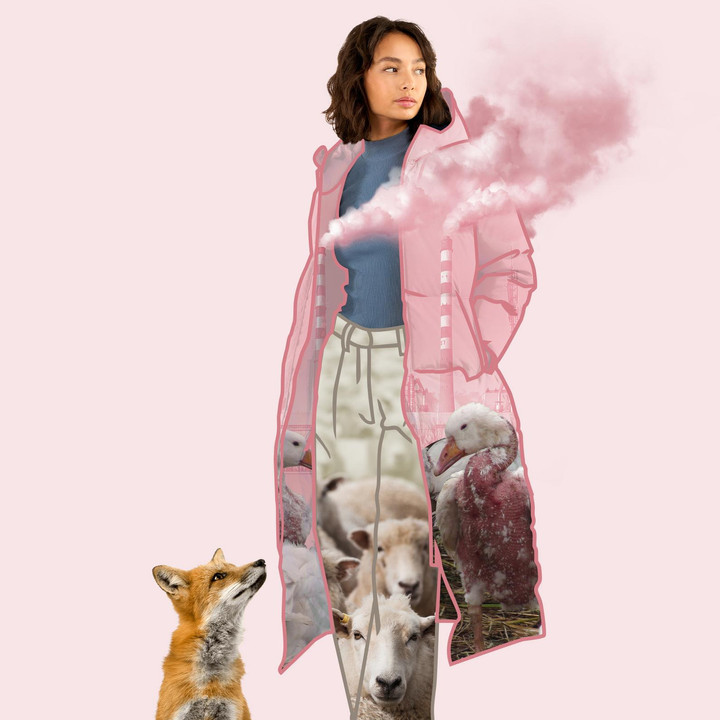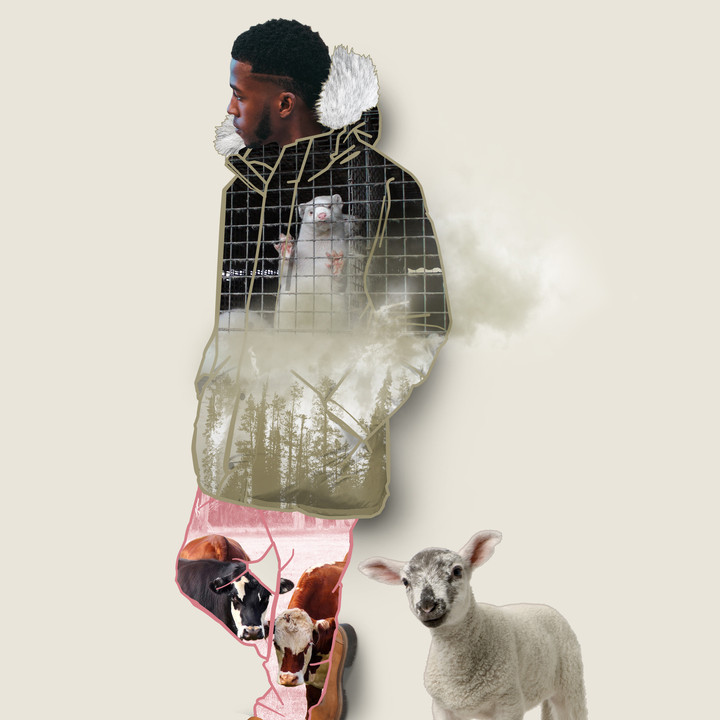
Fashion Forward
Next generation materials are both animal friendly and strive for sustainability
Billions of animals are used every year to create textiles for the fashion industry, but animals can suffer, and they aren’t the only ones. The production of animal derived materials can also have a devastating impact on our environment. Luckily, there is a solution that is positive for both animals and the planet. Next generation materials offer plant, fungi and microbe-based alternatives to products such as leather, fur, down, wool, and more!
Next Generation Materials
Just as plant-based foods offer alternatives to meat and dairy, plant-based fabrics offer animal-free alternatives for our clothing. Known as next generation materials, or next-gen, these fabrics differ from many of the plastic-based animal-free products currently on the market because next-gen materials take into account environmental sustainability as well as animal welfare.
What are next generation materials made from?
Plant-derived
Plants and plant waste such as pineapples, coconut husk, soybean, hemp, wood cellulose, cactus, apples, corn, bananas, grapes, rice, and more can be made into fabrics of various textures and purposes. Fungi and algae are also commonly used in next-gen materials. A great example of plant-derived next-gen materials being used, is by fashion brand Ganni and their use of fur made from plant-based fibres such as nettles, flax, and hemp, or Miomojo and their use of apple-based leather.
Mycelium
This root-like structure of some fungal species offers such unique qualities, that it is often considered its own category of next-gen materials. Mycelium leather mirrors the appearance and texture of traditional leather and can match its durability. However, its standout feature lies in being cruelty-free and boasting a carbon-negative footprint. Esteemed brands such as Balenciaga, Stella McCartney, and lululemon have begun incorporating this material into their collections, using it for coats, bags, and footwear alongside other innovative materials.
Microbes
Processes such as fermentation using microbes can produce products such as biopolymers and proteins that are then developed into next gen materials. Microbe materials can be used to make fur alternatives, leather alternatives, yarns, knit fabric, woven fabric, denim, fleece, and more. Brands such as The North Face, Goldwin, nanamica, and Woolrich have begun using such fabrics, partnering with Spiber Inc. who develop materials such as cashmere and wool like fibres, but are completely animal-free.
Recycled Materials
Rather than always creating new fabrics, next-gen materials also encourage using materials that are already in existence and creating new garments or fabrics from the previously existing material. This category can include recycled plastic-based materials or recycled plant-derived products.
Patagonia is a leader in their use of recycled materials, with almost their entire winter line in 2024 being made from recycled materials.
Why do we need to reduce the use of animal derived materials?
Numerous undercover investigations have documented the extensive animal suffering and abuse that occurs in the production of animal-derived products. Cruel practices persist, such as live plucking of birds for their feathers, live lamb cutting in wool supply chains, and fur-bearing animals spending their entire lives in tiny cages, only to be cruelly slaughtered for their fur.
Even for brands with certified textile supply chains and animal welfare policies, there is inherent risk to animal welfare in the intensive production of animal derived materials, and it remains highly challenging to guarantee that animals are being treated humanely.
Why are animal derived materials considered harmful for the environment?
The environmental impact of animal derived materials is significant, and their production is often directly linked to intensive livestock farming, accounting for 83% of agricultural land use1 and 16.5% of the world’s greenhouse gas emissions2.
And it’s not just the farming phase of animal derived material production that is detrimental to the environment, these materials need a significant amount of processing before use, often requiring treatment with toxic chemicals, heavy metals, or fossil fuel-based substances.
Fashion innovation and economic impact of next generation materials
With over three billion dollars of investment into the next-gen materials industry over the past decade, we are seeing more and more innovative and ingenious ways of producing textiles for fashion without the huge cost to animals and the environment. Brands are increasingly incorporating next-gen materials, and many are taking strides to improve their animal welfare policies, such as Nike, who have recently committed to using certified Responsible Wool Standard, as well as many other leading brands which have signed our Brand Letter of Intent, such as Puma, Adidas, and Hugo Boss.
It is vital that brands support these innovators in their efforts to transform the fashion industry for the better, and we can do this first by reducing our use of animal derived materials and transitioning to low-impact animal-free material choices.
What can I do as a customer?
- Look for animal-free, biobased or recycled materials, like handbags made from mushrooms, cactus, apples, grapes and more!
- Choose products made from waste, like discarded fishing nets and even used coffee grinds.
- Let brands know how you feel about their use of animal derived materials and their negative impacts. Why not shoot your favourite brand an email today? Ask them to help you #WearItKind by stocking products made from next-gen materials.
- Ask them what next-gen materials they are investing in or trialing, you could even encourage them to create a version of your favorite bag or accessory with a next-gen material – brands want to know there is demand for change amongst their customer base!
- For brands still using animal derived materials, ask about how they go about ensuring adequate animal welfare within their supply chains, and what they’re doing to reduce use.



